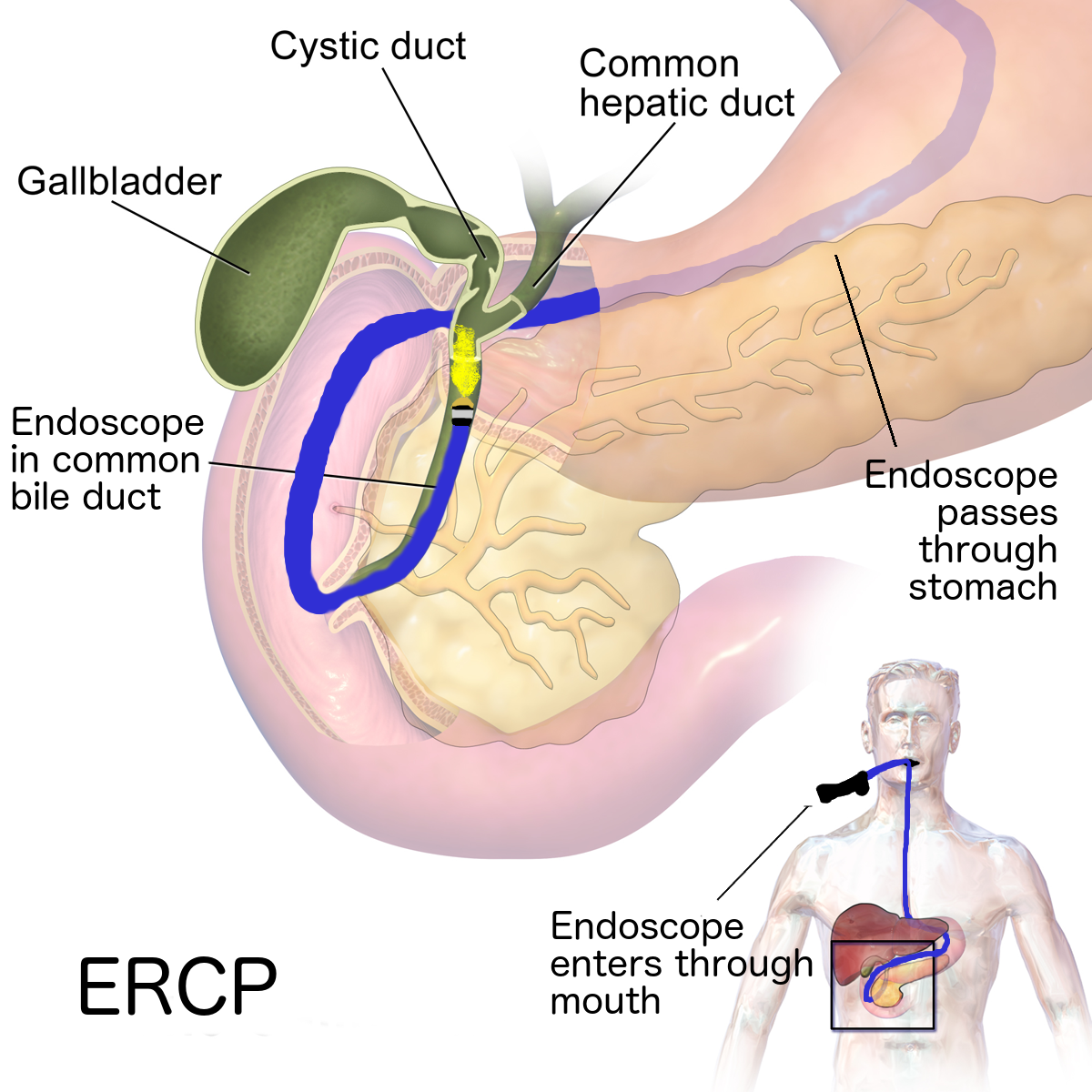Endoscopic retrograde cholangiopancreatography (ERCP) is a test that uses a combination of X-rays and an endoscope. ERCP begins with a similar process to a usual upper GI endoscope session. The endoscope enter from the patient’s oral opening, through the stomach, reaches the duodenum, then stops around the bile and pancreatic duct. An air pump might be used for doctors to see the duct clearly. Then contrast dye, aka contrast medium, will be injected into the ducts for better observation.

Due to the high risk of post-procedure complications, ERCP is usually conducted for treatment rather than observation or examination. Several common treatments that can be done by ERCP include the following.
Sphincterotomy
This procedure is used to treat severe Sphincter of Oddi Dysfunction(SOD) or papillary stenosis, medical conditions that involve a narrowed or malfunctioning sphincter. The sphincter is the muscle around the opening of the bile and pancreatic duct that controls the flow of juices into the duodenum. In the treatment procedure, small cuts will be made to the sphincter muscle, and the patient should experience relief of pain after this treatment.
Gallstone
Gallstones (also known as bilestone) occur in 20% of Canadian women and 10% of men by the age of 60, and over 80% of patients reported no symptoms. Asymptomatic gallstones do not need treatment while symptomatic gallstones will require treatment such as removal of the stone. Using ERCP, removal of gallstones can be removed from the bile duct or the pancreatic duct.
Stent placement
When a duct is narrowed or blocked by scar tissues or tumours, a plastic or metal stent will be placed to widen the passage, this process is called the biliary stent placement. Stents can also treat the leaking issue of bile or pancreatic juice, which is caused by a small hole anywhere along the ducts.
Patients who were performed with an ERCP procedure can typically go home in the same day of operation. Some side effects to keep an eye on will be bleeding, infection, allergic reaction to anesthetic, dye or drug used, and perforation of the esophagus, stomach, duodenum, bile duct, or pancreatic duct.
Reference
Biliary stent placement: Before your procedure. MyHealth.Alberta.ca Government of Alberta Personal Health Portal. (n.d.). Retrieved March 15, 2022, from https://myhealth.alberta.ca/Health/aftercareinformation/pages/conditions.aspx?hwid=abr7664
Endoscopic Retrograde Cholangiopancreatography (ERCP). Johns Hopkins Medicine. (n.d.). Retrieved March 15, 2022, from https://www.hopkinsmedicine.org/health/treatment-tests-and-therapies/endoscopic-retrograde-cholangiopancreatography-ercp#vm_A_8d863727
Lee, S. (n.d.). Cancer statistics at a glance. Canadian Cancer Society. Retrieved March 15, 2022, from https://cancer.ca/en/research/cancer-statistics/cancer-statistics-at-a-glance
Lee, S. (n.d.). ERCP (endoscopic retrograde cholangiopancreatography). Canadian Cancer Society. Retrieved March 15, 2022, from https://cancer.ca/en/treatments/tests-and-procedures/ercp-endoscopic-retrograde-cholangiopancreatography
Sphincter of Oddi dysfunction. Cleveland Clinic. (n.d.). Retrieved March 15, 2022, from https://my.clevelandclinic.org/health/diseases/14516-sphincter-of-oddi-dysfunction